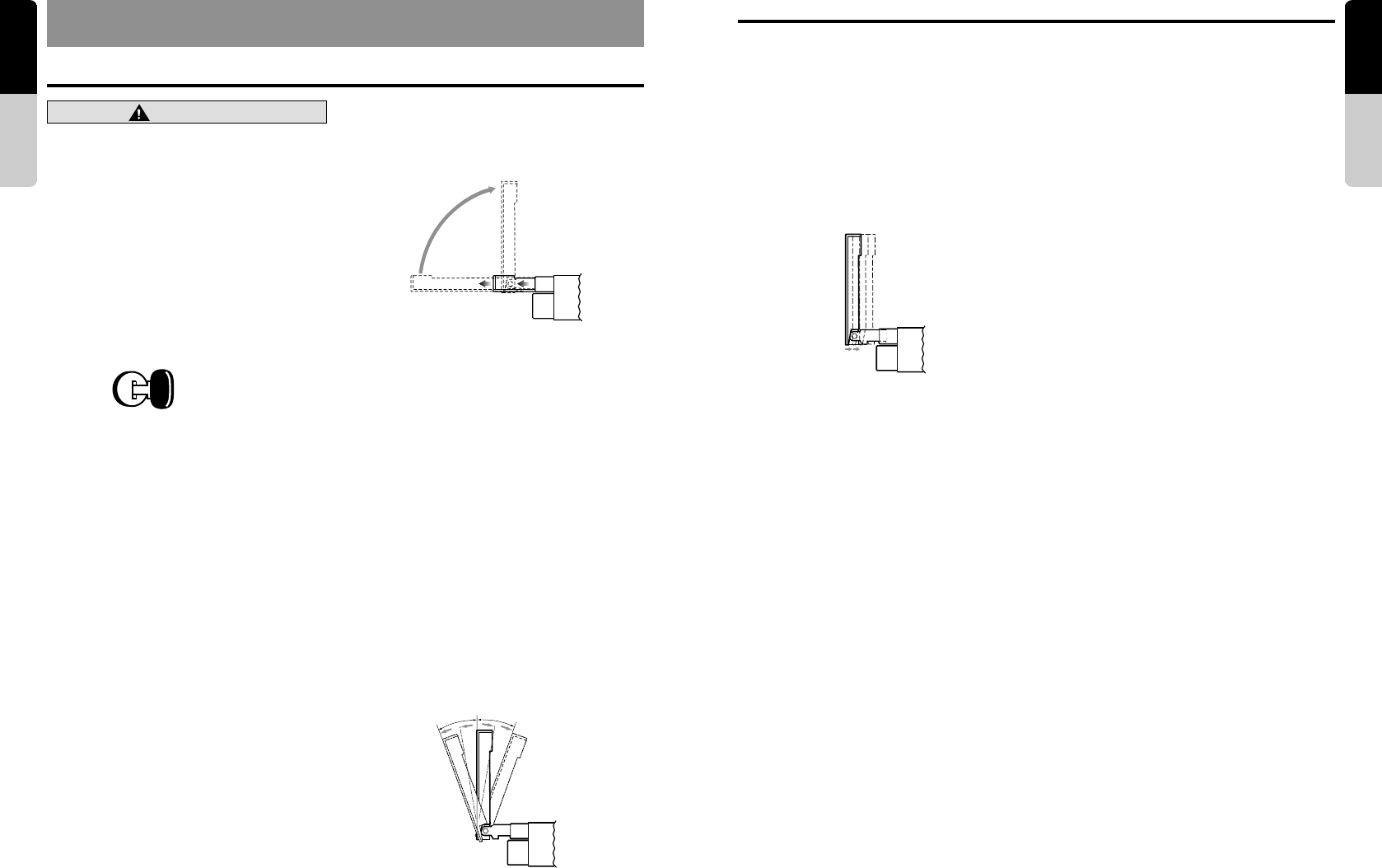
English
Owner’s manual
English
Owner’s manual
TB731P/TB732P/TB733W 1110 TB731P/TB732P/TB733W
7. OPERATION
Basic Operations
Basic Operations
Note:
Be sure to read this chapter referring to the front
diagrams of chapter “3. CONTROL” on page 5 (spread).
To prevent the battery from running down,
operate the unit while the engine is running
whenever possible.
When listening to the sound of TV programs
while driving, use a volume setting at which
you will still be able to hear sounds outside
the vehicle.
When the liquid crystal panel is operating,
be careful not to get your hand or finger
caught between the panel and main unit or
the instrument panel of the car.
Note:
• Use this unit after starting the engine.
CAUTION
ACC or engine
ON position
Turning on and off the power
Note:
• Be careful about using this unit for a long time
without running the engine. If you drain the car’s
battery too far, you may not be able to start the
engine and this can reduce the service life of the
battery.
1. Press the [PWR] button.
2. The illumination and display on the unit light
up. The unit automatically remembers its last
operation mode and will automatically switch
to display that mode.
3. Press the [PWR] button to turn off the power
for the unit.
20˚
20˚
Standing up the liquid crystal panel
1. Press the [OPEN/CLOSE] button and the
liquid crystal panel comes out and stand up
automatically.
∗ While the liquid crystal panel is opening or
closing, the LED of the [RESET] button blinks.
Note:
• If the liquid crystal panel stops in the middle of its
operation, press the [OPEN/CLOSE] button to
house the panel and press the button again to
stand it up. The unit enters the same display
mode as the display was turned off the last time.
Adjusting the angel, etc. of the
liquid crystal panel
The angle of the liquid crystal panel or
protruding amount of the panel from the
mounting surface can be adjusted depending
on the mounting angle of the unit or light
coming into the car.
●
To adjust the angle
1. Every time the [TILT] button is pressed, the
liquid crystal panel tilts forward or backward
at up to about 20 degrees. The adjusted
angel is stored in memory.
Note:
• Do not move the liquid crystal panel by hand.
●
To adjust the slide position
1. Press and hold the [TILT] button and release
when a beep is heard.
The liquid crystal panel slides forward or
backward. The adjusted slide position is
stored in memory.
∗ There are 3 adjustable positions available on
this panel.
Housing the liquid crystal panel
1. Press the [OPEN/CLOSE] button and the
liquid crystal panel is housed automatically.
Note:
• When leaving this unit unused for a long period
of time or leaving your car, be sure to house the
liquid crystal panel into the main unit.
Turning the liquid crystal panel
horizontal (Air conditioner
operation mode)
When the way the liquid crystal panel is
mounted hinders the operation of the air
conditioner, the position of the panel can be
turned horizontal temporarily.
1. Press and hold the [OPEN/CLOSE] button
when the liquid crystal panel is upright, and
release the button when a beep is heard.
2. The liquid crystal panel turns horizontal.
∗ Press the [OPEN/CLOSE] button again when
the liquid crystal panel is in the horizontal
position, and the panel returns to the original
position.
∗ Even if the button is not operated for about 10
seconds, the panel returns to the original
position with a warning sound.
Turning on and off the monitor
1. Pressing and holding the [BND] button for 1
second or longer turns the monitor off. To
return to the monitor on, press the [BND]
button once again.
∗ When a button is pressed or during security
monitoring, the monitor-off mode is canceled.
Car stereo adjustments
1. Set the car stereo’s radio frequency to the
modulator frequency. (TB731P/TB732P
only)
∗ The factory set for the modulator frequency is
88.1 MHz. (Refer to the section on selecting
the FM modulator frequency on page 15.)
2. Use the car stereo’s volume and tone
controls to adjust the volume and tone to the
desired levels.
Note:
• Adjust also the BASS (bass)/TREB (treble) and
BAL (left/right balance)/FAD (front/back balance)
controls to the optimum positions.


















